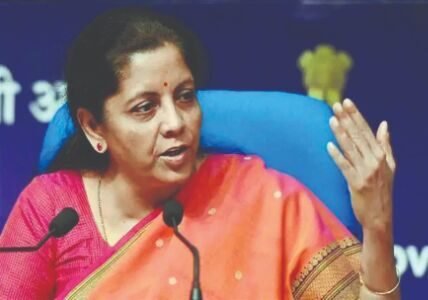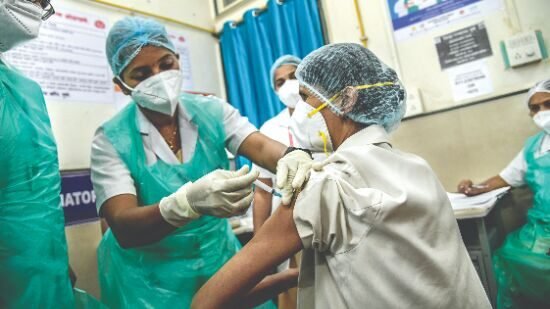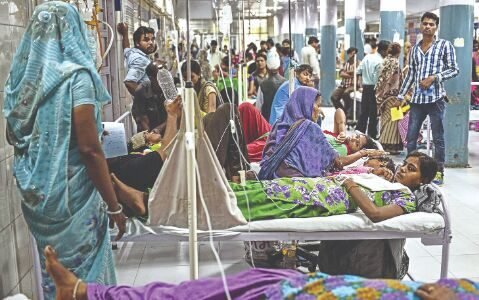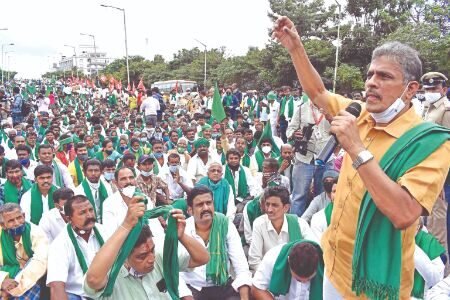Budget of hope
An expenditure budget focussed on consumer demand, private investment, health, education and agriculture is the need of the hour
On February 1, the Finance Minister shall present the Budget for the financial year 2021-22. The Budget comes after a year-long economic crisis which was the result of an unprecedented crisis in the form of the Coronavirus pandemic. Everybody is looking forward anxiously to the forthcoming Budget to gauge the response of the government to the crisis and also the direction of economic growth that it would indicate. The 1991 Budget was historic as it came in the wake of a serious Balance of Payments crisis and ushered in an era of economic reforms. The current crisis is much more threatening than that of 1991 as it is for the first time since 1979 that the country is poised to declare a negative growth rate to the extent of 7.5 per cent. This is despite the fact that the economy has shown remarkable resilience and bounced back much faster than expected with even the Reserve Bank of India claiming forthrightly that there is a V-Shaped recovery of the Indian economy. However, it cannot be denied that the pandemic has set back the economic clock and it will take time and a proper blend of policies and reforms to take the economy forward on the required rate of growth.
It is true that even before the once-in-a-lifetime pandemic struck and caught us all unaware, the growth rate of the Indian economy had been slowing down continuously to record a 4.2 per cent growth rate in the preceding year. Unemployment, farmer distress and a host of other economic issues were lingering on the horizon, waiting to be resolved. This Budget, therefore, presents a huge opportunity to give the required momentum and direction to the economy. This could well be the “Dream Budget”. It is true that not all economic decisions of significance are taken during the budget session only, and the government has to keep taking sound policy decisions throughout the year to respond in a dynamic manner to the changing economic scenario. However, the timing of the Budget is such that it would indicate the pace of economic recovery as well as bring into being, the economic reforms across various sectors. This Budget, thus cannot be an incremental pedestrian budget but has to create an environment which would bring about a quantum leap in economic growth. It is all the more important because the Government of India has set for itself an extremely ambitious target of taking the economy to the level of USD five trillion by 2025, which would require a growth rate in excess of 8 per cent every year in real terms.
The first focus area has to be that of resources. Government will need funds if it wants to step up expenditure on priority sectors, but in the aftermath of the pandemic, there is very little space left for an increase in taxes. The administering of the Corona vaccine is also expected to cost about 6,000 crores and there are speculations that this could be met through a cess imposed for this purpose. This may not be very advisable, as the need today is to put more cash in the hands for the consumers rather than taking money away from them. Macroeconomic theory clearly points out that economic growth is a function of consumption demand, private investment, government expenditure and balance of exports over imports. Among these, consumption demand has about 55 per cent weightage, and thus, it is a clear pointer that if the consumption demand is raised then the economy would grow faster. It becomes clear that the Budget has to prioritise raising consumer demand. One of the ways of doing this would be to paradoxically reduce the tax rate or do away with some of the imposed cess, so that there is more money left in the hands of the consumer to spend in the market. In addition, stressed sectors like hospitality and tourism need a booster dose of direct cash transfer. This can also be done in other sectors as well. Special schemes for putting more money into the economy would be beneficial at this moment. This would in turn give the much-needed fillip to the private investment, which so far, has not shown any propensity to increase despite the exhortation by the honorable Prime Minister of India. We have to go forward and further facilitate ease of doing business by suitable reforms in land, labour and other related sectors, but these measures have to bring results at the ground level to genuinely attract more private investment. The government has to step up its investment in public infrastructure in a big way to enhance private investment as well as put more money into the hands of the people. Investment in infrastructure will have a multiplier effect on the economy, besides, leading to increased capital formation. Some of the measures that can be taken to increase the resources are through public sector undertakings divestment or by offering tax-free bonds.
The expenditure priorities have to be healthcare, nutrition, education, agriculture and medium and small scale industries, with public health becoming the topmost priority of the nation. Of course, we cannot ignore the all-important defense sector.
New Education Policy was announced in the midst of the raging pandemic and is high on intent and idealism but needs to be translated into cogent schemes and action plans. This Budget would set the ball rolling with special schemes in education sectors to enhance foundational learning as well as to bring about an all-round improvement in the quality of education.
The current century is the one where those investing in knowledge lead the race, and if India has to occupy a dominant status, then there has to be a sharp increase in the budget allocation for research and development in various sectors and also special schemes to incentivise R&D in the industrial sector. The Budget will also clarify the real meaning of Atmanirbhar Bharat, which should not in any way, become like the import-substitution policies after the independence which were the hallmark of self-reliance. Atmanirbhar Bharat should mean an India having a vibrant manufacturing sector, producing quality goods for the domestic as well as the global economy. The Budget would be watched keenly to see what kind of schemes and incentives are introduced to make the vision of Atmnirbhar Bharat a reality.
The farmers’ agitation has shown that the agriculture sector is under a lot of stress and needs more direct support from the government. The PM Kisan is an excellent scheme but the amount has to be increased beyond Rs. 6,000 per year to give more direct support to the farmers — already impacted by the volatility of the agriculture market. This Budget should come out with a comprehensive scheme for creation of Farmer Producer Companies in such a manner that they can be operationalised to bring about the required aggregation of farmers to come out of the cycle of the low income trap — brought about by fragmentation of landholdings.
The Budget should also come up with innovative social safety nets for the migrant labourers whose plight shocked the soul of the nation. Medium Small and Micro Enterprises, especially those related to food-processing have to gravitate towards rural areas to create employment in non-farm activities near the villages, so that people do not have to migrate to the far-off states in quest of jobs and basic minimum income. The Budget should also focus on increasing the exports from India in both agriculture as well as manufacturing. The growth in exports over the last few years has not shown an encouraging trend.
Last but not the least, it is the all-important issue of employment which has been further accentuated by the pandemic. The government must come out with concrete proposals to tackle this problem head-on and create an economic environment where sufficient jobs would be created to absorb the youth joining the workforce in large numbers every year. Introduction of an urban equivalent of MGNREGA could be one of the options.
The public sector banks are in urgent need of recapitalisation and the Budget will have to address this to enable the banks to give more credit to generate more investment.
There is no doubt that this has to be a momentous budget, which will set the tone for the recovery of the economy and general well-being of the society in the years to come. This Budget is coming at a defining moment in the life of the nation.




